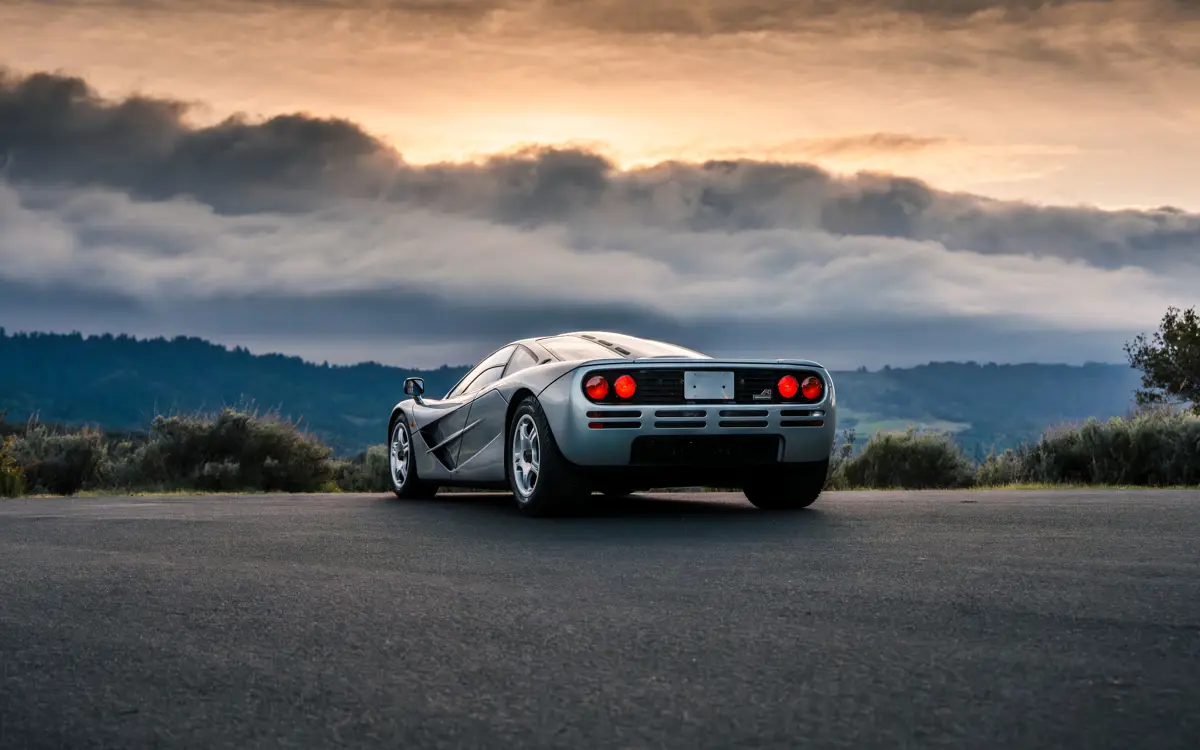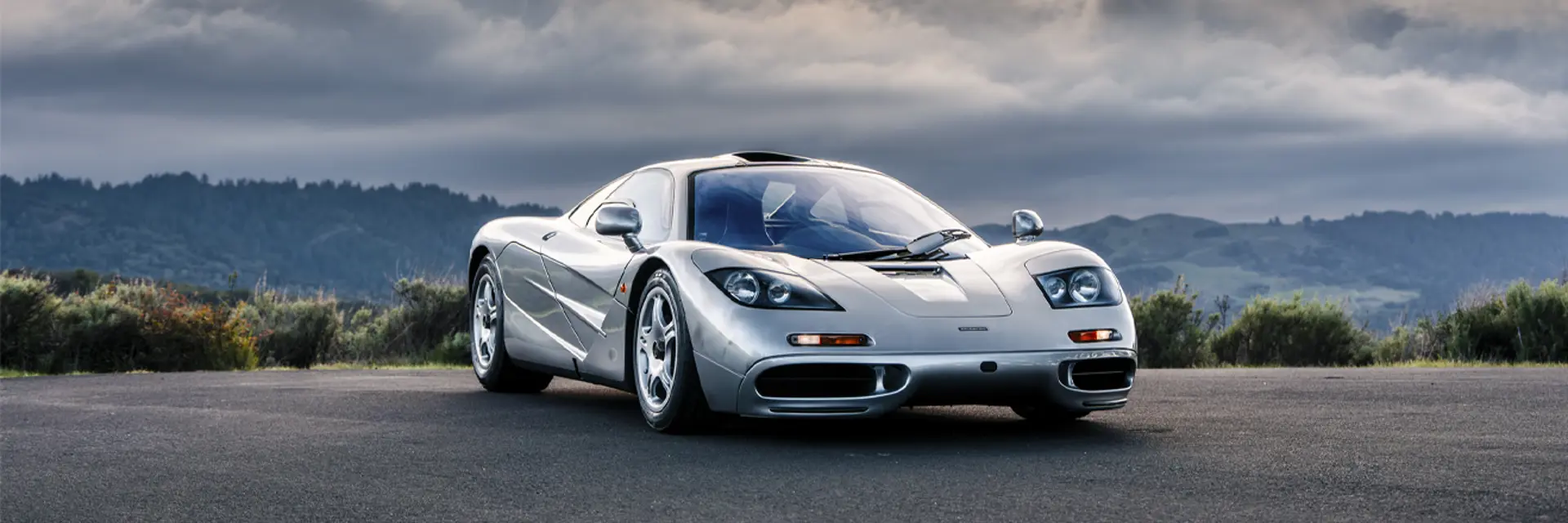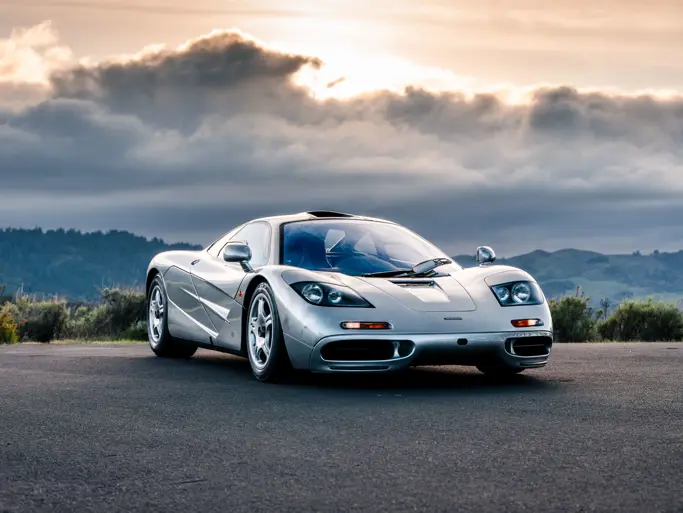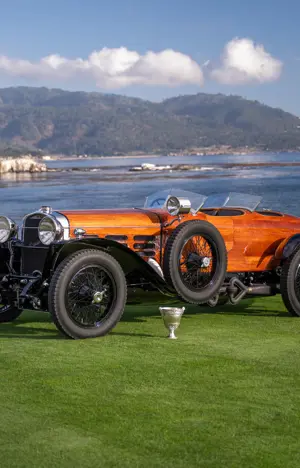To this day, the McLaren F1 fascinates like no other supercar before or since, with the fate of each of the 106 cars generating endless discussions and rumour. Join us as we explores the compelling story behind one of the original seven cars exported to North America.
Join Paul Bond as he explores the compelling story behind one of the original seven cars exported to North America. A resident of the San Francisco Bay Area since new having always been registered in the state of California, it'll soon head down the road to Monterey in search of a new place to call home.
That age-old conundrum 'What do you get the man who has everything?' has never been more apposite than when applied to a very 21st-century phenomenon: The rise of the tech billionaire.
This emerging class of high-powered investors, future savants, and disruptors who reside in the San Francisco Bay Area represent a different kind of meteoric wealth—one that defies tradition and thrives on fierce competition. Many of these scions of silicon earn their fortunes so rapidly in the boom and bust of market dips and rallies, that actually spending it becomes its own challenge.
Larry Ellison, who commissioned chassis 062 in 1997, is a fantastic case in point. One of the first wave of Silicon Valley entrepreneurs, he drove cross-country to Berkeley from New York in 1966 to start a career, founding his company Oracle a decade later. An incomparable success story, he's survived each rise and fall of the software revolution, shrewdly investing even in his fiercest rivals.
After becoming a billionaire at 49, the 80-year-old is currently worth an estimated $250 billion. And when your previous purchases run the gamut of everything from racing yachts and a collection of Richard Mille watches to Hawaiian Islands and an international tennis tournament, there's a risk of automotive pursuits looking like small stakes—but there's no chance of that with a McLaren F1.
It is that rarest of things: A car created from a totally blank sheet of paper. Not just that, but the culmination of a vision from a genius designer and a team that delivered it without compromise. Among its peers it stands alone, regarded by most aficionados as the greatest car ever made. So it's clear to see why mere mortals treat it with reverence. But what about those in the upper echelons of the 1%? What sets McLaren apart in making an indelible impression on this cohort? Larry, Elon Musk, and Open AI's Sam Altman all own or have owned F1s, and the curious case of this example, finished in stunning Magnesium Silver, exemplifies this car's hold over tech's titans.
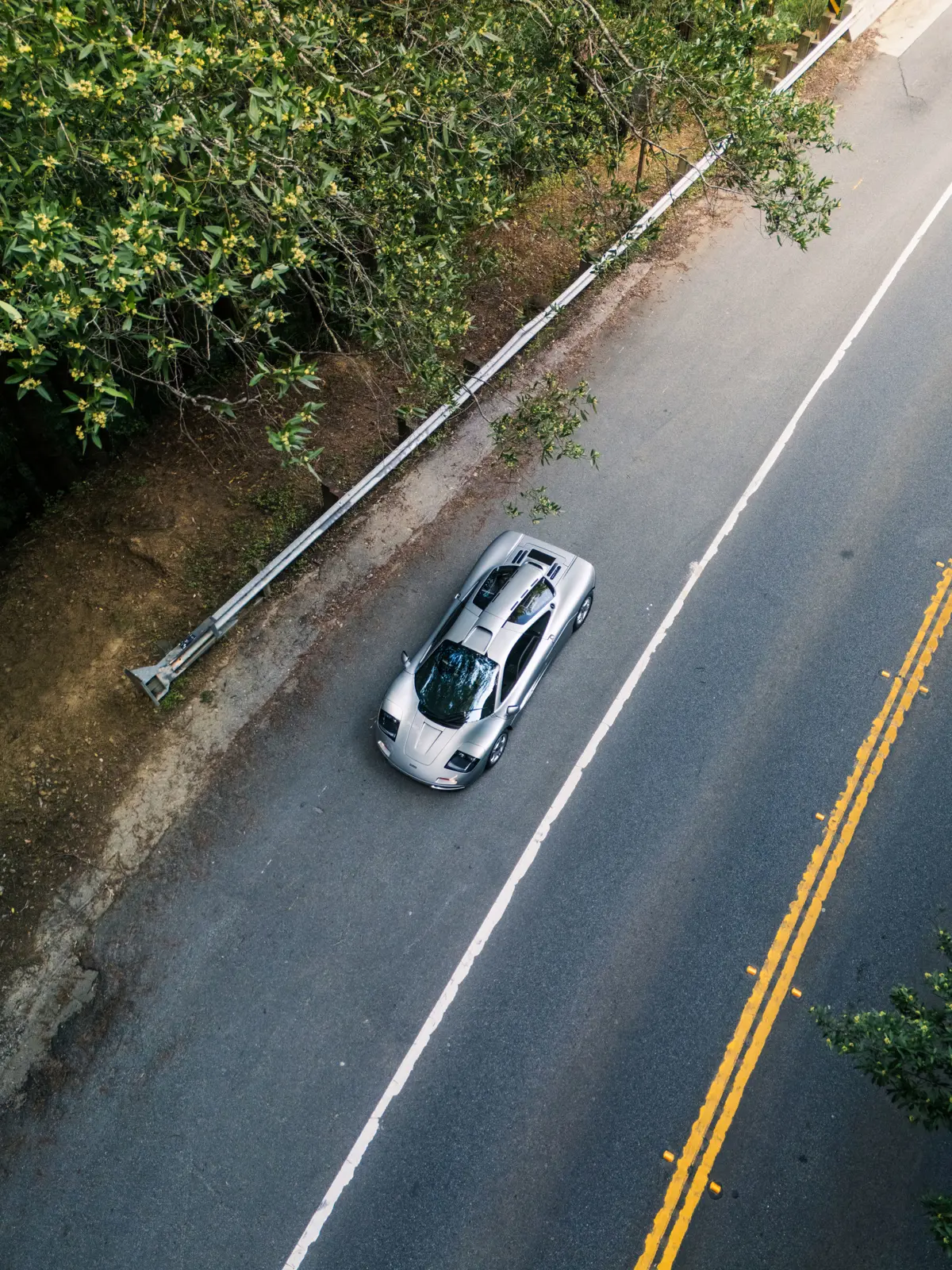
In some respects, it's easy to see why McLaren, and in particular the F1, has such a sway over cutthroat business leaders with a specific type of mindset. It's not a community with any respect for established marques or legacy players. Ferrari has been producing its own thoroughbreds since the 1940s, and Lamborghini since the mid-1960s, so there's a whole stable to choose from.
In comparison to the stampede of Prancing Horses and Raging Bulls, the F1 stands alone, more like a unicorn—it has no forbears, and the P1, Speedtail, or W1 aside, McLaren never built a direct successor. The lack of familial ties is all part of its mystique, just as iconic as its central driving position and record-breaking speed.
Who in the start-up set could fail to be enticed by a supercar that wrote its own rules? One that emerged almost out of nothing to win critical acclaim and (almost accidental) motorsport success, unencumbered by history or any sort of reverence to the past. A team given the freedom to take the latest innovations from Formula One and sympathetically adapt them for application on the road in a new project that started as a list of non-negotiables, with a singular goal: To make 'the finest sports car the world had ever seen.' In the process it broke the mould in every possible sense.
Its scarcity (106 built in total inclusive of only 64 road cars excluding prototypes) is naturally a large part of the appeal. The wonderful alchemy of exotic materials used in its construction, the clarity of the engineering approach, and mechanical purity of the components beneath its timeless design all inspired a cult following that has no equal. This machine is the product of pure obsession, and one that was far ahead of its time.
This obsession can be seen in the components used to construct it. The F1 was the first production car to boast a carbon fibre composite chassis alongside structural carbon fibre bodywork and is awash in titanium, magnesium, and aluminium under that carbon fibre skin. That use of carbon fibre gave the car not only remarkable strength and safety for its three occupants, but it was remarkably lightweight as well, tipping the scales at a dry weight of just 2,513 lbs (1,140 kg), much lighter than supercars of today. Each time one is seen in public—let alone sold—it becomes an event worthy of speculation and awe.
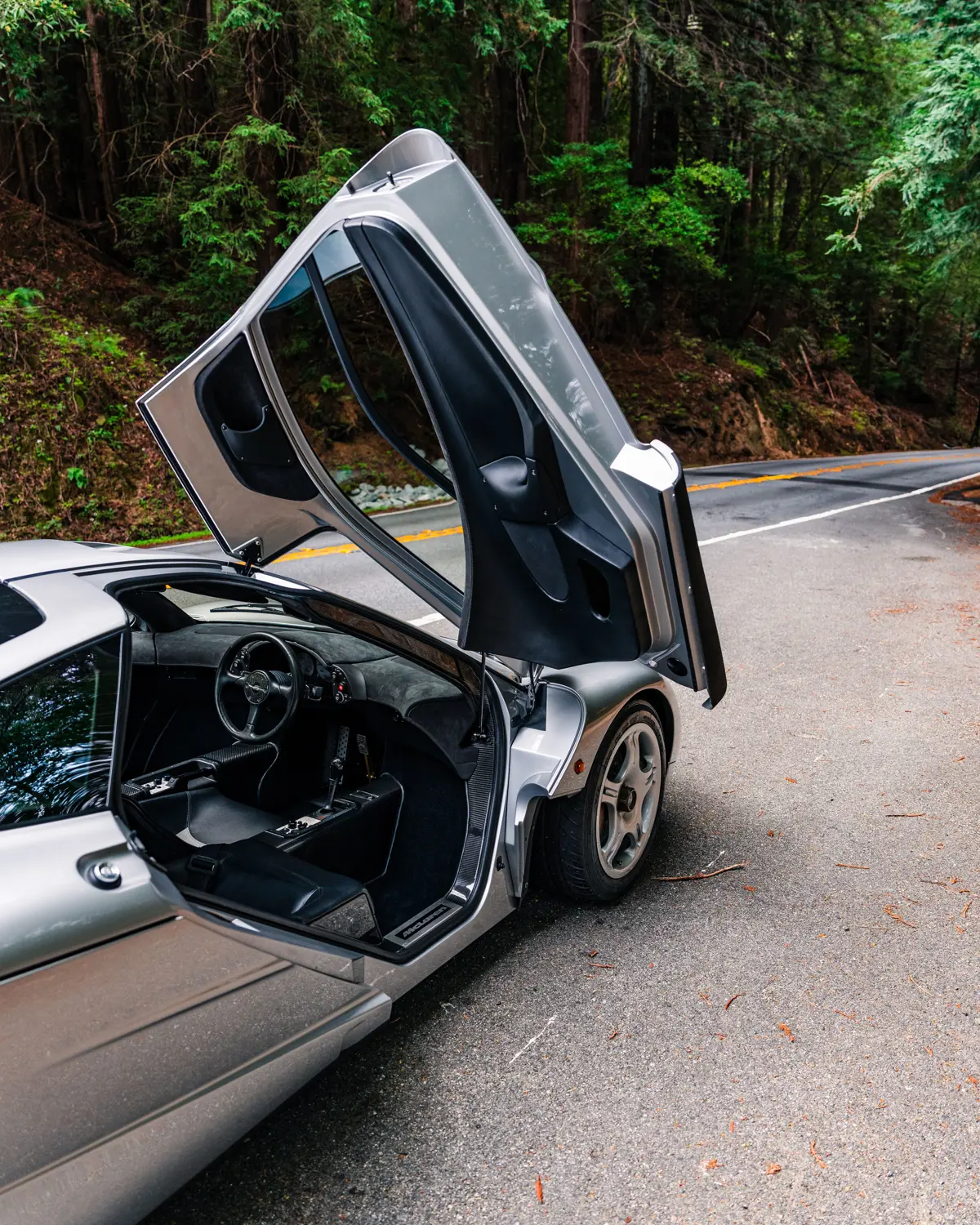
Originally completed in 1997, this particular F1 belongs to another highly exclusive group—the seven cars imported to North America by Ameritech when new. Already lauded by the press, McLaren was riding on a wave of positivity following the F1 GTR's smash-and-grab victory against more bespoke racers at a rain-soaked Le Mans in 1995, and sales went truly global. However, importing them to the US at that time required complying with strict federal laws that had the potential to hobble both its breathtaking performance and spoil its stunning good looks.
The stringent rules were no mere box-ticking exercise, and before being federalised and legal to drive, US law required that it met safety and emissions regulations not written for any supercar. To satisfy the regulators, each F1 was supposed to have been fitted with new front and rear bumpers, headlights, and a set of rather unsightly bulbous extrusions to the edges of its low nose.
It also required that it was turned into a single-seater, with the two passenger seats on either side of the driver blanked off with a set of crude covers. Ameritech issued new VIN numbers for each car (claiming to the authorities that all were built in 1995) and imported them through a loophole in the rules via a free trade zone, listed as a manufacturer. While never officially confirmed, it is strongly believed that these invasive federal modifications were only ever applied to one example, and since six of the seven were the same specification, one set of photos could be used to pass inspection. In the case of our subject car, there is no evidence it ever received these modifications (aside from the Ameritech VIN used for importation and subsequent road registration).
Putting a pair of eight-kilogram horns on the bonnet, heavy-duty steel mounts for the bumpers, and fitting new headlights on the F1 is the art equivalent of putting a moustache on the Mona Lisa. Every gram used in the construction of this car mattered.
Attention to detail is what really defines its place as the greatest car of the last century, and the low weight and slippery aerodynamic profile were key to its physics-defying 240.1-mph top speed.
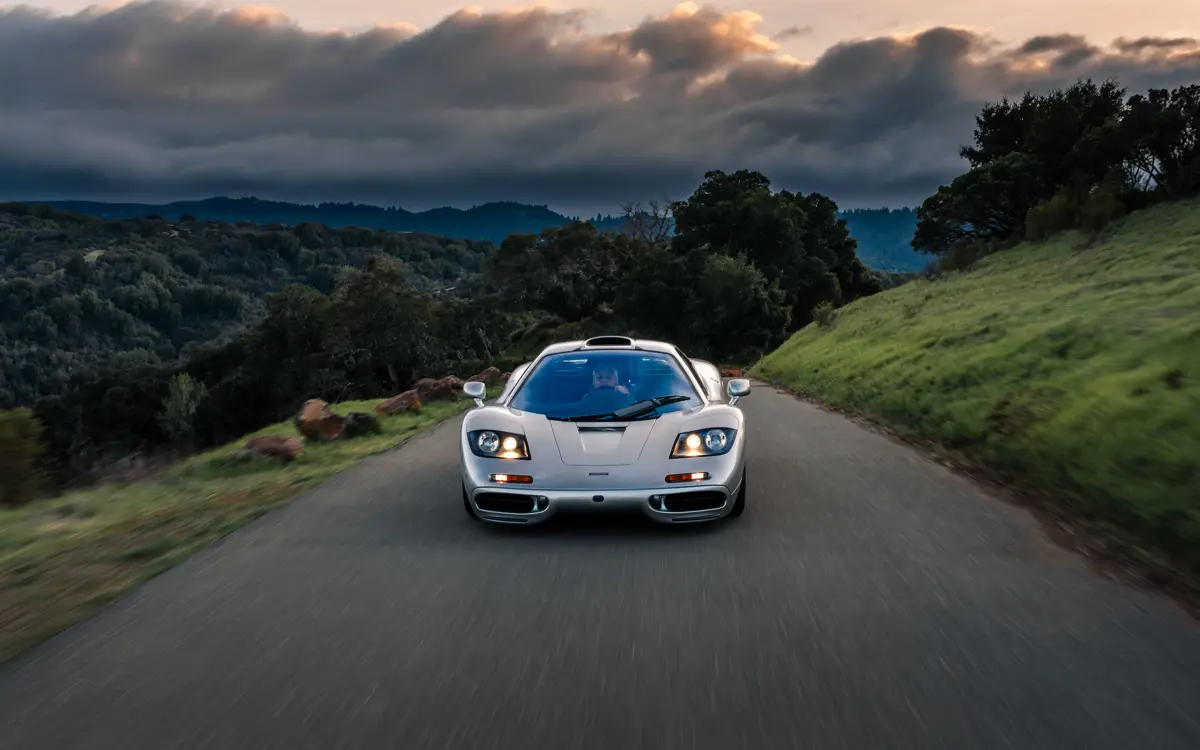
That record, set in 1998 with Le Mans winner Andy Wallace at the wheel, remains unbroken, and the F1 is still the fastest naturally aspirated production car ever made, almost 30 years later. To quantify how much things have moved on in that timespan, the 16 grams of gold foil used to line the F1's engine bay and protect the carbon composite chassis from the ferocious heat of the 6.1-litre V-12 would have cost $170 in the year Ellison took delivery—it's now worth ten times that.
It's no secret that the driving force behind the project, Gordon Murray, was a huge admirer of the Honda NSX in terms of its everyday usability, and as McLaren Racing's partner at the time, Honda were approached first to see if they could make an engine that produced the 100 brake-horsepower per litre output that Murray insisted on. While it's fun to imagine what might have been in the alternate scenario, the Japanese company flatly refused, so BMW stepped in with its mighty S70/2 engine.
It was even more powerful than McLaren had asked for, but also a touch heavier. Chosen for its greater reliability at peak output and relative mechanical simplicity (compared with turbocharged or supercharged engines), it was still anything but basic. With a quad-cam layout, four valves per cylinder, and an early version of variable valve timing to provide greater control over combustion. A smattering of rare earth elements and alloys were used for key components with no expense spared. Magnesium for the cam covers and oil sump, Inconel catalysts for the quad-exhausts, and tough Nikasil coating inside the twelve cylinders to increase their longevity at higher loads.
The resulting power output of 627 horsepower at 7,400 rpm and 479 pound-feet of torque might appear almost modest by modern standards, but its delivery was anything but. Instant and linear response, with no lag or barrier between the engine and the throttle pedal, gave the driver total control of how its power was delivered to the rear wheels. On its high-speed proving runs, the test driver shifted up into sixth gear at 199 mph off a banked curve, running hard into the limiter another 40 mph later.
The F1's final power-to-weight ratio was an unfathomable 550 horsepower/tonne, enough to outmatch contemporary 90s Bugattis, Ferraris, and even GT1 homologated racers by over 100 horsepower. Small wonder that the GTR version had its might muzzled by an air-restrictor to keep it at 600 horsepower before it was allowed to go racing, but remarkably kept its six-speed manual gearbox unmodified.

Yet despite the headline performance figures, it's worth remembering that Murray was just as preoccupied with comfort as he was squeezing every last ounce of muscle from its V-12 heart. Modern conveniences like air conditioning, electric windows, and a decent stereo were there to ensure that driving the F1 any distance felt like a pleasure rather than an ordeal. The suspension kinematics were tuned specifically to offer enough compliance to breathe with the surface of the road. Its immensely stiff carbon fibre chassis and double-wishbone design, and an overall lack of mass allowed for a far more forgiving spring and damper setup than in other sports cars. Although without any electronic driver aids to speak of, a certain level of driving skill was needed.
Ellison owned this example for almost a decade, wearing the California vanity license plate 'ORACLE8' and logging just 2,600 miles in the process. In a twist of fate, Elon Musk bought one of the other American-delivered cars, chassis 067, in 1999 following the sale of his first dot-com company, Zip2 to Compaq. It was an identical spec to Ellison's, with a black leather interior and grey driver's seat, however the pair enjoyed rather contrasting fates. Musk drove his daily, allegedly racking up over 11,000 miles. In fact, a CNN crew captured Musk taking delivery, as his fiancée at the time, Justine Wilson, remarks effusively off camera "it's the perfect car for Silicon Valley, it really is."
In a remarkable piece of synchronicity, both 062 and 067 were reunited in Italy in 2012, as their new custodians took part in the F1 Owner's Club 20th Anniversary Tour. The silver siblings that had been brought into America together years before were joined by 17 other F1s, including five GTRs, along with two of the original prototypes (XP3 and XP4). The former was driven by Gordon Murray himself, for three days of spirited Dolomites driving routes and a celebration of all things F1. A pair of MP4-12Cs joined them as support cars, neatly bridging between two eras of McLaren.
The F1 set the blueprint for the modern McLaren Automotive we know today, making room for a whole new generation of young and affluent entrepreneurs eager to capture some of its magic but without the unfettered financial success required to secure one. Woking still badges its raciest models 'long tail' in homage to the final variant of the F1 GTR. It approaches performance with a scientific thoroughness, and all its road cars since 2012 have had those graceful butterfly doors.
Its sci-fi campus is dubbed the 'McLaren Technology Centre' and is such an eye-catching piece of modern architecture that it's doubled as both a villain's lair in a big-budget action film and a planetary spaceport in Star Wars spinoff series Andor. Entirely appropriate, when you learn that the creative brief given to Foster & Partners (who designed it) was: '90% NASA, 10% Disney.'
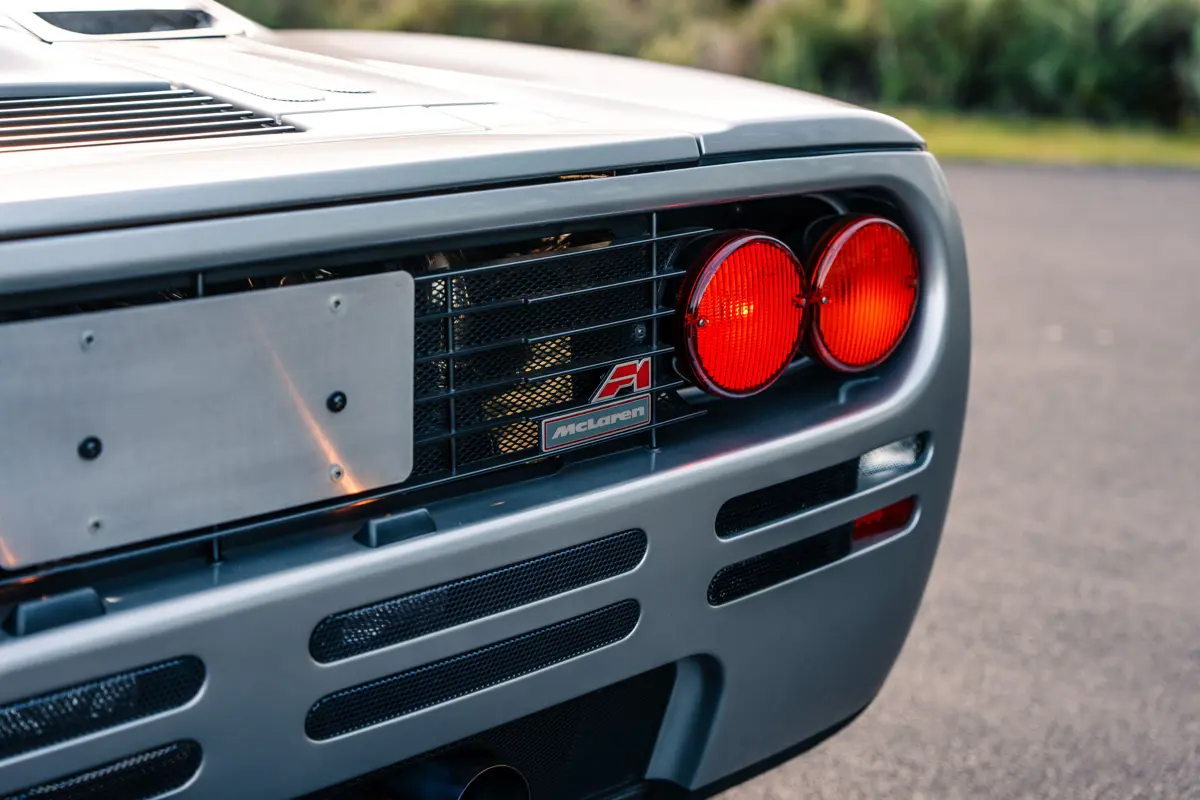
Former McLaren PR John Paolo Canton sums this pattern up in an interview in 2016: "The lifestyle and the mentality of the consumer here is very much in line with our brand and our values." The 911 Turbo-rivalling 650S even cameos on the self-satirising HBO show Silicon Valley. In the second season, a character is forced to sell his car, lamenting the loss of its 'billionaire' doors.
Luckily, the next two owners of Ellison's car have been just as careful and fastidious as he was. Now having covered approximately 6,500 miles from new, it has never left the friendly Californian climate, the San Francisco Bay Area, or even the small town where it has always resided, with the exception of its factory and service visits, and to attend that historic gathering at Lake Garda at the aforementioned owner tour. No other F1 can lay claim to remaining within the same zip code with three different owners.
Importantly, 062 remains as one of only a handful of F1s delivered new to and originally registered in the state of California. This was an enormous task for the first owners to navigate the state’s complex and arduous laws regarding emissions, yet another significant hurdle above and beyond the aforementioned US federal regulations.
During its life, this car was meticulously cared for and thoughtfully upgraded by McLaren Special Operations with a view to extending its longevity and usability for the next owner. Those upgrades include work on the radiators and air conditioning ahead of tackling Italian switchbacks in 2012, along with the more recent fitment of aluminium fuel tanks and a sports exhaust to dial-up the aural drama.
It's unclear if Larry Ellison ever actually saw his own car being given a diagnostic inspection, but it's funny to think about how the CTO of a software giant like Oracle might have reacted to the sight of the Compaq LTE 5280 laptop that's needed to interface with the F1's ECU. Still, if a tech billionaire of all people can't raise a smile at one of the most revolutionary cars of our generation being meticulously maintained with a computer with eight megabytes of RAM, no one can.
McLaren F1 chassis 062 will be auctioned online via the Sealed platform during Monterey Car Week with bidding due to open on 13 August 2025 and close on 16 August 2025.
